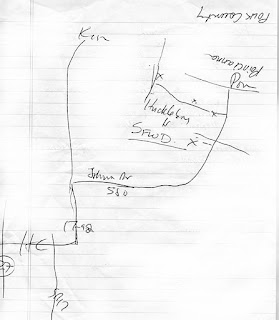X Marks the Spot: The Search for the Celestial Lily

submitted by Donna Bollenbach, Suncoast Chapter (originally printed in The Grapevine, the Suncoast Chapter's monthly newsletter) The Map The Map Back in October, I ran into a friend at a native plant talk. He enthusiastically told me about a colony of Celestial Lilies, Nemastylis floridana , that were blooming in central Florida, and hastily drew me a map to locate the beautiful and endangered wildflowers. The map was very rough, so I tried to ask questions, but the talk we were both attending started, and I was left with this somewhat cryptic diagram. In any case, that weekend my husband, Bob, and I decided we were going to try find the spot, and invited a few unsuspecting friends for the hunt. I first tried to see Celestial Lilies at Kissimmee Prairie Preserve. It was late fall, a little pass their peak blooming time, and all we found was one bud. With at least six pairs of eyes staring at it, it did not open. I should also say that Celestial Lilies are unusual in ...






